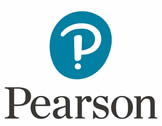
Se vi trovate nella situazione in cui avete bisogno di scrivere una mail di sollecito in inglese, in questo articolo troverete tutte le informazioni necessarie per scrivere un 'email di follow up o reminder efficace e professionale.
Le email di follow-up e i reminder sono due tipologie di comunicazioni sintetiche estremamente utili nella vita quotidiana in ufficio. Vediamo nello specifico in cosa consistono e come redigerle nel modo migliore. Prendi spunto dagli esempi che ti presentiamo per non sbagliare!
In questo articolo troverai:
Cos’è un’email di follow-up?
Un’email di follow up è una comunicazione che fa seguito ad un incontro o ad un evento. Il suo obiettivo è “riprendere la conversazione” da dove l’avevi lasciata, riprendendo i contatti con un contatto lavorativo dopo un primo incontro per esempio, e approfondendo la conoscenza per convertire questo contatto in un nuovo cliente o collaboratore.
Per follow-up email si intende anche una particolare tipologia di e-mail che un sistema informatico permette di salvare e inviare in modo completamente automatico e in un preciso momento agli utenti iscritti ad una Mailing List. Anche in questo caso, la progettazione e stesura del testo è di fondamentale importanza. Vediamo quindi come creare una perfetta email di follow up.
Le regole da seguire per un follow up perfetto
È fondamentale scrivere questo tipo di email nelle tempistiche e nei modi giusti, per non essere troppo insistenti o invadenti ma nello stesso tempo ottenere un feedback dal destinatario. Ecco le regole fondamentali:
- Rispetta i tempi giusti
Invia la tua email entro 24, massimo 48 ore dall’incontro (riunione, serata o altro). Se lo fate troppo tardi, rischiate che il vostro contatto abbia già dimenticato i dettagli di ciò che vi siete detti.
- Sii conciso
Questa regola è valida per qualsiasi email di lavoro: un testo prolisso fa sì che il lettore perda subito interesse.
- Fai riferimento ai pregressi
Chiarisci subito dove vi siete incontrati, magari accennando a qualcosa che ti ha colpito del vostro incontro.
- Esponi chiaramente la tua richiesta/proposta
Una follow-up viene sempre elaborata con un obiettivo specifico: esponi chiaramente la tua proposta o la tua richiesta nei confronti dell’interlocutore, in modo che non ci sia alcuna ambiguità.
- Scrivi l’oggetto dell’email in modo accattivante
Scrivi l’oggetto dell’email in modo che sia originale e accattivante, e inviti il destinatario ad aprire l’email e a leggerla.
Esempi
Esempio n.1:
Oggetto: Appreciate your time today, John!
Hi John,
Thanks for taking the time to share a little about Red, as well as the goals and challenges you face.
If you would like to learn how other companies are dealing with challenges like yours, I would be happy to schedule a call. We could also talk a bit more about your issues and determine whether or not I might be able to offer some help.
So are you available for a call next Tuesday at 1pm? Thanks again for chatting today.
I look forward to hearing from you!
Esempio n.2:
Oggetto: Thank you for your time
Dear mr Red,
Thank you so much for taking the time to talk to me about the position of digital marketing manager position with Axel this morning. It was a pleasure to learn more about your core values and innovative strategy.
The details you provided me with about the position convinced me that this is a job I would enjoy and one where I could make a valuable contribution with my skills and experience.
Here attached you will find the details of some of my projects we talked about. Please feel free to contact me if you find you need any more information. I look forward to our call next week as discussed.
Thank you once again,
Best regards,
Se vuoi metti alla prova il tuo business english con uno dei nostri test gratuiti online:
Cos’è un reminder?
Un reminder è un promemoria, un sollecito (seppur amichevole e cortese) via email per ricordare al destinatario di compiere un’azione. I reminder vengono utilizzati per esempio in caso di ritardo nei pagamenti, quando una spedizione è in ritardo, per richiedere la consegna di un lavoro quando la scadenza è già passata. Come creare un reminder perfetto in inglese?
Anche in questo caso, è necessario essere brevi e concisi, ed esplicitare con chiarezza l’obiettivo della comunicazione: vogliamo che dopo aver letto la mail il destinatario compia l’azione che gli abbiamo ricordato. Il tono deve sempre rimanere cortese e gentile. È bene iniziare la comunicazione con una nota positiva, per esempio un complimento o un apprezzamento del lavoro già svolto.
Vediamo alcuni esempi di reminder efficaci.
Esempio n. 1:
Oggetto: Response required: Project Orange
Hi Janet,
your risk analysis for Project Orange was very helpful. Thanks for being so thorough. However, we are behind on Phase 1. It was due yesterday, and we need it as soon as possible so we can move on to the next project phase.
Please let me know the revised completion date. If you are having trouble with this phase, I would be happy to help answer any questions you may have. You can reach me at 123 456 789
Esempio n. 2:
Oggetto: Invoice for account number 12345 due today
Hi Mr Johnson,
This is to remind you that payment of invoice for account number 12345 is due today. The total amount is $640. Please make your payments to the account number specified on the invoice.
Attached is a copy of the invoice. If you have already made the payment, please ignore this email. But if you haven’t, please do so immediately.
Thank you for making this matter a priority. Sorry for any inconvenience we might have caused. If you have any questions concerning the same, I will be happy to answer.
Thanks,
Se vuoi migliorare il tuo business english, per avere un avanzamento di carriera, leggi subito il nostro ebook:






